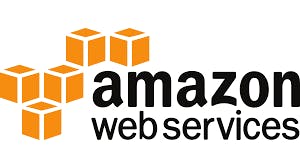The Ultimate Guide to Selecting the Best Storage and Data Management Tool for Your Needs
Making an Informed Decision: Choosing the Right Database for Your Needs
Introduction
In the era of data-driven decision-making, the field of data engineering has emerged as a crucial discipline. Data engineering involves the collection, transformation, storage, and management of vast amounts of data, enabling organizations to extract valuable insights and drive innovation. In recent years, data engineering has gained immense popularity due to the exponential growth of data and the need for efficient storage and data management tools.
Popular data engineering tools can be grouped into four major categories: storage and data management, big data processing and analytics, data integration and orchestration, and data warehousing. Storage and Data Management tools aim to store, organize, and efficiently retrieve large volumes of data. Big Data Processing and Analytics tools help process, analyze, and gain insights from massive datasets that are too large for traditional data processing systems. Data Integration and Orchestration tools facilitate the seamless flow of data across different systems and platforms, making it easier to integrate and manage data from different sources.Data Warehousing tools provide a centralized repository for storing and managing structured and organized data, often used for business intelligence and reporting purposes.
In this blog, we will explore a diverse range of storage and data management tools offered by leading providers such as Apache, AWS, Azure, GCP, IBM, and others, unlocking the potential for robust data engineering solutions.
Exploring Features, Pros, Cons, and Use Cases of Top Storage and Data Management Tools
In this section, we will explore the key features, pros, cons, and use cases of the top storage and data management tools offered by leading providers such as Apache, AWS, Azure, GCP, IBM, and others. These tools are essential for data engineering, allowing organizations to efficiently store, manage, and analyze vast amounts of data.
Apache Software Foundation:

Apache offers a number of tools for storage and data management. These tools are used to store, manage, and analyze large amounts of data. A few of them are given below:
Apache Hadoop:
Apache Hadoop is a powerful tool for storing and managing large datasets. It supports structured, semi-structured, and unstructured data, making it versatile for various data types. Hadoop offers scalability and fault tolerance, making it perfect for big data analytics, batch processing, and data warehousing.
Pros: Scalable storage and distributed processing for large datasets, fault tolerance.
Cons: Complexity in setup and maintenance, higher learning curve.
Use Cases: Big data analytics, batch processing, data warehousing.
Apache Kafka:
Apache Kafka is a distributed streaming platform for real-time data streams. It handles high-velocity, event-driven data from diverse sources like websites, applications, IoT devices, and social media. Kafka enables real-time analytics, event-driven architectures, and microservices communication with fault tolerance and scalability.
Pros: Real-time data streaming, fault-tolerant and scalable, decoupled data producers and consumers.
Cons: Requires additional components for data processing and storage, steep learning curve.
Use Cases: Real-time data streaming, event-driven architectures, microservices communication.
Apache Cassandra:
Apache Cassandra is a scalable and fault-tolerant NoSQL database for handling large volumes of data. It supports structured, semi-structured, and unstructured data, making it versatile. Cassandra excels in storing time series data, enabling real-time analytics and high-volume transactions. With low-latency performance and flexible data modeling, it's ideal for distributed and scalable data storage.
Pros: Highly scalable and fault-tolerant NoSQL database, low latency, flexible data model.
Cons: Complex data modelling, eventual consistency.
Use Cases: Time series data, real-time analytics, high-volume transactional systems.
Amazon Web Services (AWS):

Amazon S3 (Simple Storage Service):
Amazon S3 is a scalable and durable object storage service by AWS. It's used for storing files, images, videos, and backups. S3 offers high durability and integrates well with other AWS services. It provides flexible access controls and storage options to optimize cost and performance. S3 is commonly used for backup, content distribution, and serving static assets. However, it has eventual consistency and limited support for complex transactions compared to relational databases.
Pros: Scalable and durable object storage, seamless integration with other AWS services.
Cons: Eventual consistency, limited support for complex transactions.
Use Cases: Cloud-native applications, backup and restore, content distribution.
Amazon Redshift:
Amazon Redshift is a managed data warehousing solution by AWS. It offers high-performance analytics and scalability. Redshift uses columnar storage and parallel queries for fast analysis. It's commonly used for business intelligence and data exploration. However, it can be costly for large datasets and has limited data ingestion options compared to other solutions.
Pros: Fully managed data warehousing solution, high-performance analytics, easy scalability.
Cons: Higher costs for large datasets, limited data ingestion options.
Use Cases: Business intelligence, ad hoc analytics, data exploration.
Amazon DynamoDB:
Amazon DynamoDB is a managed NoSQL database by AWS. It offers low-latency and scalable performance, ideal for real-time applications. It provides fast and predictable performance, but can be costly for large workloads and has limited querying capabilities compared to relational databases.
Pros: Fully managed NoSQL database, seamless scalability, low-latency performance.
Cons: Higher costs for large workloads, limited querying capabilities.
Use Cases: Real-time applications, high-traffic web apps, gaming leaderboards.
Microsoft Azure:

Azure Blob Storage:
Azure Blob Storage is a scalable and cost-effective object storage service by Microsoft Azure. It securely stores unstructured data and integrates with other Azure services. Common uses include backup, media storage, and content distribution. However, it has limited querying capabilities and eventual consistency.Pros: Scalable and cost-effective object storage, integration with Azure ecosystem.
Cons: Limited querying capabilities, eventual consistency model.
Use Cases: Backup and archival, media storage, log files.
Azure Data Lake Storage: Azure Data Lake Storage is a scalable and secure data lake solution by Microsoft Azure. It supports diverse data types and enables high-performance analytics. Common uses include building data lakes and running big data analytics. However, setup and management can be complex, and data transformation may be needed for optimal query performance.
Pros: Scalable and secure data lake solution, supports big data analytics.
Cons: Complex data ingestion process, requires data transformation.
Use Cases: Data lakes, big data analytics, machine learning.
Azure Cosmos DB:
Azure Cosmos DB is a globally distributed, multi-model database service by Microsoft Azure. It offers high availability, scalability, and support for multiple data models. It is suitable for various applications, including web, mobile, and IoT. However, it has higher costs for large datasets and querying complexities for certain data models.Pros: Globally distributed, multi-model database, low latency, high availability.
Cons: Higher costs for large datasets, complex querying for certain data models.
Use Cases: Web and mobile apps, real-time analytics, IoT applications.
Google Cloud Platform (GCP):

Google Cloud Storage: Google Cloud Storage is a scalable and cost-effective object storage service provided by GCP for a wide range of data types, including files, backups, and multimedia content. It provides seamless integration with other GCP services and and offers features like versioning, access controls, and lifecycle management.
Pros: Scalable and globally accessible object storage, high durability.
Cons: Limited data processing capabilities, eventual consistency.
Use Cases: Backup and restore, data archiving, content distribution.
Google Bigtable: Google Bigtable is a fully managed NoSQL database service offered by Google Cloud Platform (GCP). It is designed to handle massive volumes of structured and semi-structured data. Bigtable provides scalability and high availability, making it suitable for applications that require real-time access to large datasets.
Pros: Fully managed NoSQL database, low-latency read/write, automatic scaling.
Cons: Limited querying capabilities, higher costs for large workloads.
Use Cases: Time series data, IoT applications, and ad tech platforms.
IBM Cloud:

IBM Cloud Object Storage: IBM Cloud Object Storage is an object storage service provided by IBM Cloud. It offers scalable and durable storage for unstructured data, including files, images, videos, backups, and archives. It supports various storage classes, allowing organizations to optimize cost and performance based on their specific requirements.
Pros: Scalable and durable object storage, built-in security features.
Cons: Limited data processing capabilities, and higher costs for frequent data access.
Use Cases: Backup and restore, archiving, content repositories.
IBM Db2 Warehouse: BM Db2 Warehouse is an enterprise-class data warehouse solution offered by IBM. It is designed to handle large volumes of structured and unstructured data and provide high-performance analytics. Db2 Warehouse offers a scalable and flexible architecture, allowing organizations to efficiently store and process diverse data types. It supports advanced SQL querying, machine learning integration, and data virtualization capabilities. With built-in data compression and optimization techniques, Db2 Warehouse delivers fast query performance while minimizing storage requirements.
Pros: Fully managed cloud-based data warehousing, and high-performance analytics, built in security features.
Cons: Higher costs for large datasets, and limited integration with non-IBM tools.
Use Cases: Business intelligence, data warehousing, data exploration.
Choosing the right storage tool for your needs
Selecting the right database for your specific use case is crucial for ensuring optimal performance, scalability, and data management. Here are some key factors to consider when making this decision:
Data requirements: Evaluate the nature of your data, including its volume, variety, and velocity.
Scalability: Consider the scalability requirements of your application and the expected growth of your data.
Performance and querying capabilities: Evaluate the performance characteristics of the database.
Security and compliance: Data security and compliance are critical considerations.
Integration options: Consider the integration capabilities of the database with other tools and technologies in your tech stack.
Cost considerations: Evaluate the cost implications of the database.
Conclusion
In conclusion, selecting the right storage and data management tool can significantly impact your organization's ability to extract value from data. Each tool has its strengths and weaknesses, so choosing the right one depends on your organization's specific needs, including the size and complexity of your data, the required level of scalability, and the desired level of flexibility. It's essential to evaluate each option thoroughly and consider factors such as cost, ease of use, and integration with existing infrastructure. Ultimately, the right storage and data management tool should enable your organization to efficiently store, manage, and analyze data, driving better decision-making and business outcomes.
If you found this blog helpful, please follow and subscribe to my blog for more content on data engineering, data science, and machine learning. I will be posting more blogs around similar topics in the future.
Thank you for reading!
